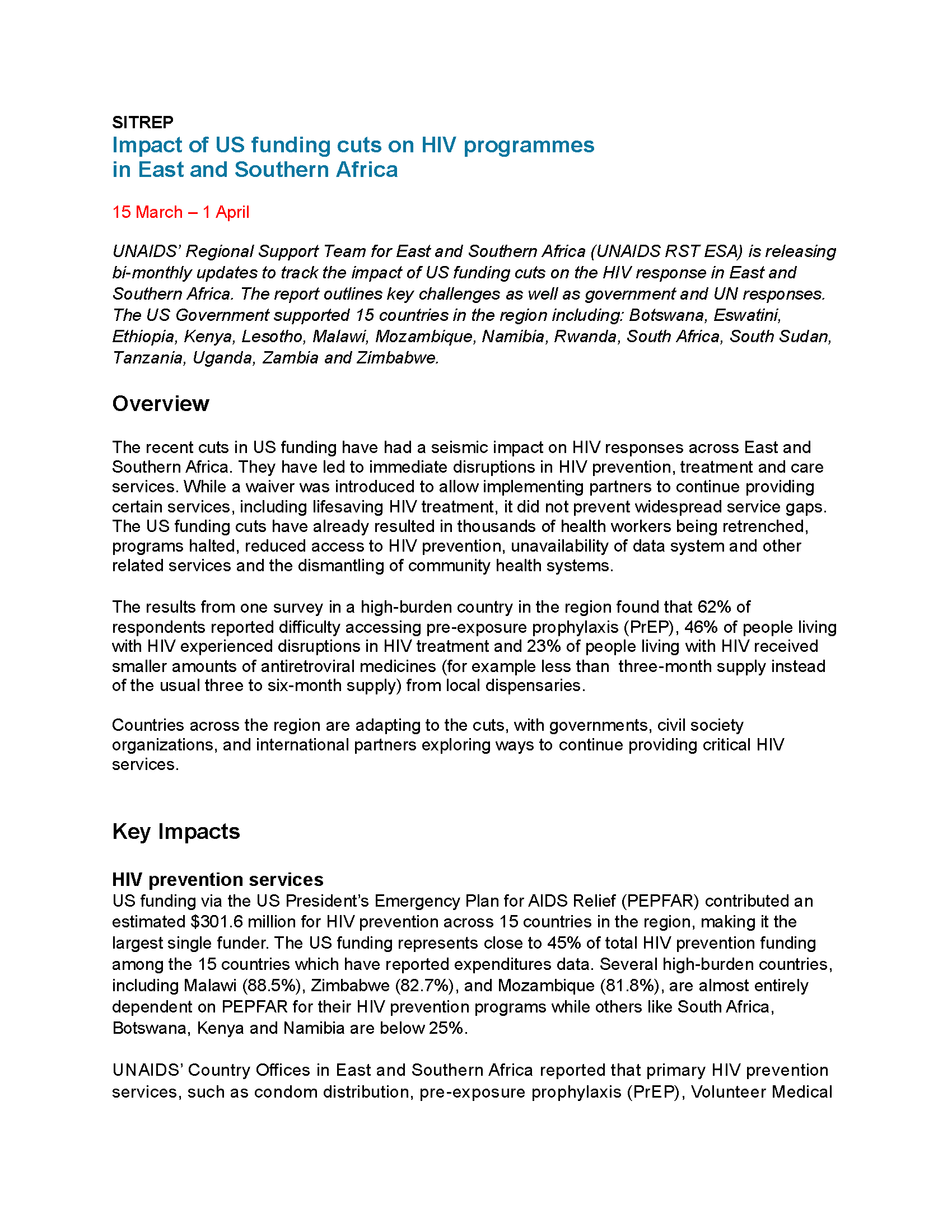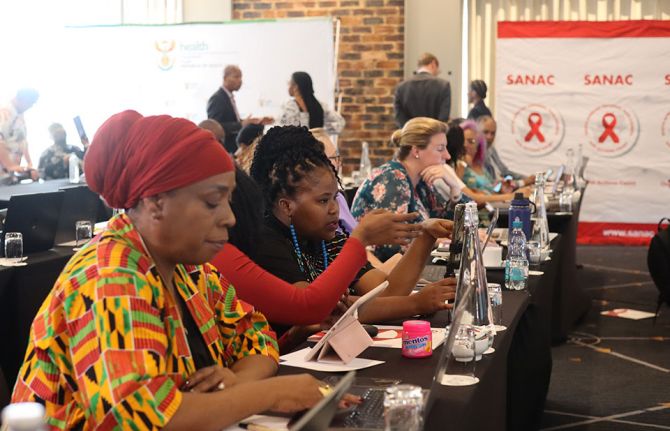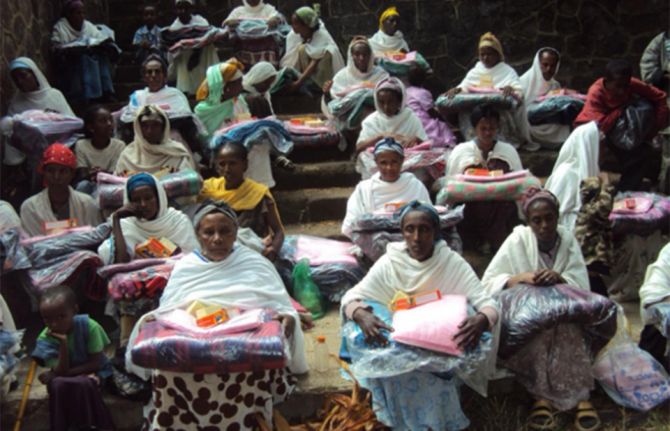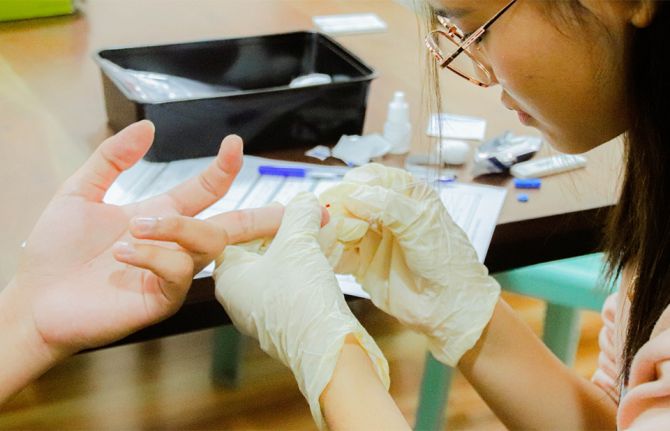

Feature Story
Impact of US funding cuts on HIV programmes in East and Southern Africa
31 March 2025
31 March 2025 31 March 2025UNAIDS’ Regional Support Team for East and Southern Africa (UNAIDS RST ESA) is releasing bi-monthly updates to track the impact of US funding cuts on the HIV response in East and Southern Africa. The report outlines key challenges as well as government and UN responses. The US Government supported 15 countries in the region including: Botswana, Eswatini, Ethiopia, Kenya, Lesotho, Malawi, Mozambique, Namibia, Rwanda, South Africa, South Sudan, Tanzania, Uganda, Zambia and Zimbabwe.
The recent cuts in US funding have had a seismic impact on HIV responses across East and Southern Africa. They have led to immediate disruptions in HIV prevention, treatment and care services. While a waiver was introduced to allow implementing partners to continue providing certain services, including lifesaving HIV treatment, it did not prevent widespread service gaps. The US funding cuts have already resulted in thousands of health workers being retrenched, programs halted, reduced access to HIV prevention, unavailability of data system and other related services and the dismantling of community health systems.
The results from one survey in a high-burden country in the region found that 62% of respondents reported difficulty accessing pre-exposure prophylaxis (PrEP), 46% of people living with HIV experienced disruptions in HIV treatment and 23% of people living with HIV received smaller amounts of antiretroviral medicines (for example less than three-month supply instead of the usual three to six-month supply) from local dispensaries.
Countries across the region are adapting to the cuts, with governments, civil society organizations, and international partners exploring ways to continue providing critical HIV services.
Key Impacts
HIV prevention services
US funding via the US President’s Emergency Plan for AIDS Relief (PEPFAR) contributed an estimated $301.6 million for HIV prevention across 15 countries in the region, making it the largest single funder. The US funding represents close to 45% of total HIV prevention funding among the 15 countries which have reported expenditures data. Several high-burden countries, including Malawi (88.5%), Zimbabwe (82.7%), and Mozambique (81.8%), are almost entirely dependent on PEPFAR for their HIV prevention programs while others like South Africa, Botswana, Kenya and Namibia are below 25%.
UNAIDS’ Country Offices in East and Southern Africa reported that primary HIV prevention services, such as condom distribution, pre-exposure prophylaxis (PrEP), Volunteer Medical Male Circumcisions (VMMC) and peer outreach conducted by community-led organizations have been deeply affected by US funding cuts. PrEP services are particularly impacted due to their heavy reliance on US funding. The DREAMS programme, which targeted 2 million adolescent girls and young women in 10 countries in the region has shut down. Similarly, programming for key populations, including HIV prevention programming, has not been prioritized.
Notable examples:
- In Malawi HIV prevention education and awareness campaigns and VMMC services have been suspended or reduced. Community-based HIV prevention and outreach programmes have been disrupted. Recent efforts to develop a national programme for people who use drugs have been affected. Programs for key populations have been significantly affected, with the closure of drop-in centers.
- The DREAMS programme in all 10 countries has halted. The programme was a PEPFAR initiative that served 2 million adolescent girls and young women in sub-Saharan Africa and focused on HIV prevention, sexual and reproductive health and rights, physical and sexual violence, education and empowerment.
HIV treatment and preventing vertical transmission of HIV
The US funding cuts have caused widespread fear and confusion about treatment availability, particularly among people living with HIV who access HIV related services in drop-in centers. Despite the waiver, services for pregnant women living with HIV have been affected, increasing the risk of vertical transmission during childbirth and breastfeeding.
Notable examples:
- In Kenya, some HIV treatment facilities are not yet operating optimally due to staffing challenges, which has resulted in unguided integration of HIV into outpatient services, posing a threat to patient privacy. Additionally, panic about treatment availability, particularly among young people living with HIV, has led to some young people living with HIV spacing, sharing and/or stockpiling antiretrovirals (ARVs).
- Zimbabwe has experienced disruptions in testing of pregnant women during prenatal care, early infant diagnosis, pediatric HIV treatment services and the sample transport system.
Health facility closures and disruptions in clinical services
Countries have reported closures of some sites delivering HIV treatment or other disruptions in clinical HIV services. Thousands of health workers have been retrenched leading to major service disruptions. In some cases, health workers without prior experience in HIV care have stepped in raising concerns about the quality of care.
Notable Example :
In Kenya approximately 41,000 doctors, nurses, technical and management staff and community workers were supported by the US government; in South Africa 15,000 health workers; in Mozambique more than 21,000 health workers.
- In Malawi 247 nurses, 3,513 community health workers, 206 technical and managerial staff and other 485 human resources reliant on US funding are facing contract terminations. Furthermore, HIV data management has been hugely affected; 20% of the 271 electronic medical record systems established at service sites were down during assessments in February.
- In Ethiopia, there is currently no plan by the government or partners to take in the human resource costs caused by the US funding cuts namely the jobs of 97 community adherence case managers, 194 support workers, eight pharmacy technicians and six laboratory technicians for HIV treatment services.
Community health systems
There is concern that community systems, including advocacy, service delivery, monitoring, and evidence gathering, are collapsing. In several instances, even where governments step in to fund treatment gaps, most resources are directed toward formal health systems, leaving community-based initiatives behind.
Notable examples:
- In Angola, all community outreach programmes supported by PEPFAR in four of the country’s 21 provinces have stopped.
- In Eswatini, many community-led or peer-led facilities and services, as well as services provided by local and international NGOs, have stopped functioning.
Key populations and human rights
US funding has been largely halted for projects and programmes focused on addressing stigma and discrimination and enabling legal environments. This often means that monitoring of human rights issues has stopped, intensifying fears of discrimination and human rights violations against people living with HIV and key populations and other vulnerable groups as they are forced to switch from tailored, community-supported services to government services for the general population. In resource-constrained regional settings, there is a risk that programming for key populations, including HIV prevention and care linkages, will not be prioritized.
- There are growing challenges to accessing HIV prevention and sexual and reproductive health rights services for adolescent girls and young women given the defunding of HIV prevention services including youth friendly services at community level.
- Across East and Southern Africa, funding for gender-based violence prevention and response programs are coming to a halt.
Research and trials
In South Africa, US government-supported research on the HIV vaccine and long-acting PrEP has come to a halt. A large tuberculosis (TB) research study was also stopped leading to fears of disruptions of TB service delivery, reductions in treatment adherence and increases in TB transmission and mortality. In Ethiopia, the US government supported Cab-La pilot has halted. Thisnew HIV prevention technology would especially benefit adolescent girls and young women who face inequalities that create barriers to accessing sexual and reproductive health services.
Government responses
Countries in the region are responding to the impact of the funding cuts on their HIV response. Many countries conducted UNAIDS-supported rapid surveys to assess the impact of the cuts on recipients of HIV services and have put in place short and long-term mitigation measures. Kenya and Rwanda are among the list of countries that have reported that domestic resources are being mobilized to maintain priority HIV programmes previously funded by the US. Countries have committed to ensuring continuity of treatment for people living with HIV and are discussing future budgetary allocations for antiretroviral treatment to ensure there are no disruptions in ARV medications.
Notable examples:
- Ethiopia’s parliament has introduced a new payroll tax as part of measures to fill the financial gap left by the USAID funding pause. The new bill has been forwarded to a parliamentary committee for deliberation. The funds collected will go to a new Ethiopian Disaster Risk Response Fund to pay for projects previously funded by USAID including HIV medication.
- In Lesotho, a task team has proposed mitigation measures based on a mapping of US-funded projects, including government payment of salaries for affected staff, task shifting, recalling of staff on leave, and integration of HIV services.
- Botswana and South Africa are among those countries working with organizations that have lost US funding to refer their clients to government facilities for essential services.
- Malawi's government is working with partners, including UNAIDS, to ensure the continuation of HIV services and plans to lead service delivery planning and management going forward, with partners supporting where gaps are identified.
Critical gaps
The recent US funding cuts have created critical gaps in the HIV response across East and Southern Africa. The gaps, unless filled, will have severe public health consequences, reversing the gains made thus far in the HIV response.
Key areas affected:
HIV prevention & treatment commodities: Reduced access to ART, HIV test kits, PrEP and condoms, increasing the risk of HIV transmission and HIV treatment interruptions.
Human resources for health: Workforce shortages due to salary cuts and hiring freezes which is putting a service delivery and patient care.
TB Ccmmodities: Limited availability of diagnostic tools and TB medications, delaying detection and treatment, which could lead to drug resistance.
Data monitoring & management systems: Weakened tracking of disease trends, leading to gaps in evidence-based HIV response planning.
Community systems: Closing of community-led health initiatives, outreach programs and peer support has disrupted community systems that are vital to the success of the HIV response.
UNAIDS response
- Monitoring and communication: UNAIDS regional team is actively monitoring the impact on the response in the region and supporting organization wide efforts to collect data and information on the impact in real time. The regional team is maintaining communication and collaboration with communities, networks and partners.
- Collaborative assessments: UNAIDS regional team has been supporting UNAIDS Country Offices as they work with governments to assess the impact of the HIV response and to put in short- and long-term mitigation measures.
Collaborations with communities: UNAIDS is collaborating with the Athena Network on assessing the impact of the funding cuts on girls and young women. UNAIDS is also working with the Global Network of People Living with HIV (GNP+) to develop a comprehensive survey to document the impact on community systems across the region.
- Collaboration with regional co-sponsors: UNAIDS, UNICEF and WHO are in discussions about the impact of the US funding cuts on supply chain constraints and collaborating on potential solutions for the region. UNAIDS and WHO are engaging with national AIDS commissions to assess the impact and discuss fundraising modalities to continue ongoing HIV related activities. Through the 2gether4SRHR program, collaborations between UNICEF, UNFPA, WHO and UNAIDS at both country and regional level are reviewing plans to be more responsive to the current crisis. Efforts are underway to collect data, identify effective integration models and establish a minimum HIV service package for humanitarian settings.
- Support for transitioning to national ownership: The UNAIDS regional team is working in collaboration with the SADC Secretariat and member states on the sustainability roadmaps. UNAIDS is working with UNAIDS Country Directors to advance HIV Sustainability Roadmap Part B with support from Gates Foundation and Global Fund in Namibia, Botswana, Malawi, Kenya, Zambia and Zimbabwe. UNAIDS also socialized UNAIDS Country Directors on the RAFT Tool, which helps countries assess PEPFAR investments and prioritize necessary actions to address these. The tool has been piloted in Uganda and Rwanda and is now being rolled out more broadly.




